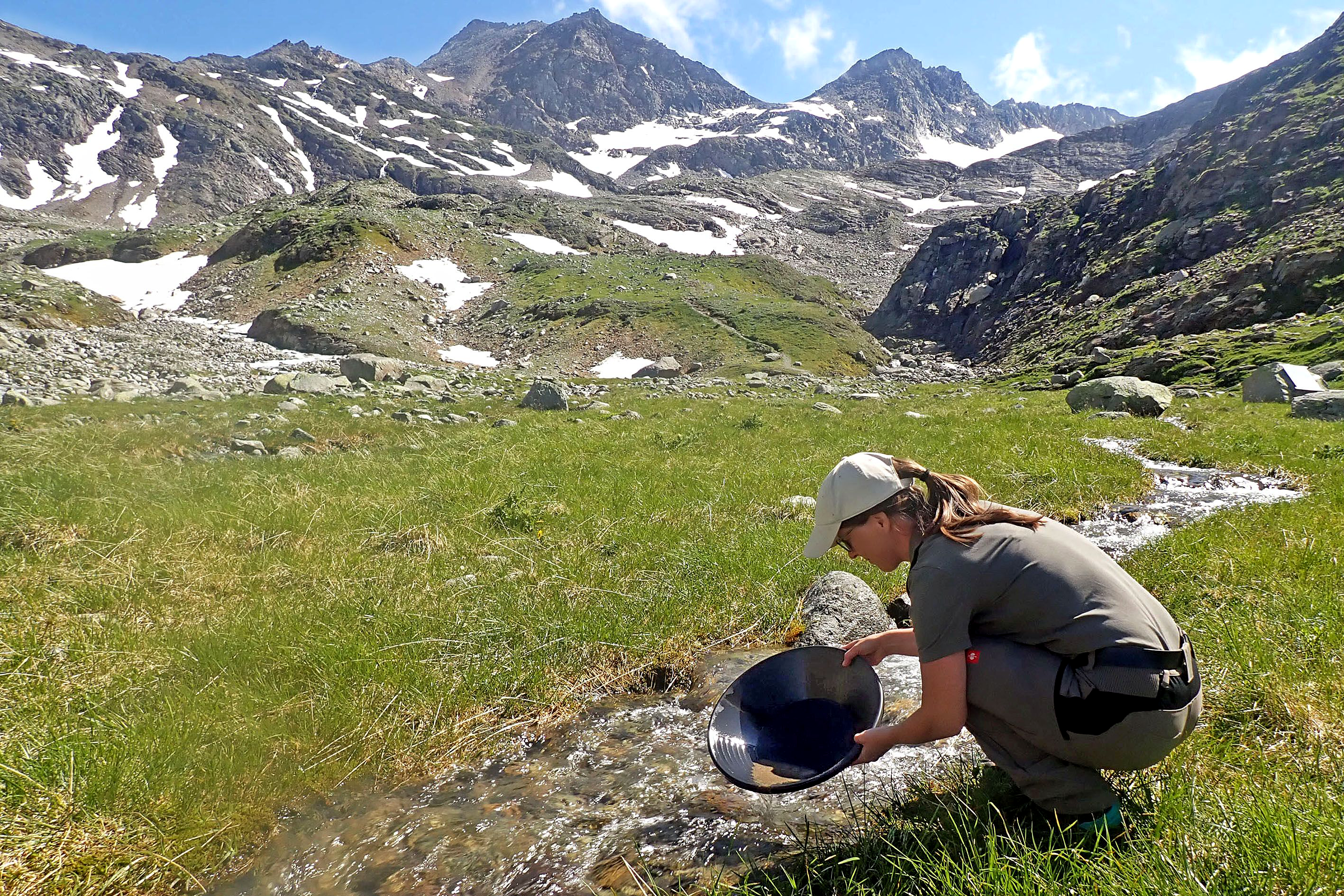Analytik von Schwermineralen als Indikatoren für Rohstofftypen und Höffigkeit mit Schwerpunkt Wolfram
HeavyMin provides a fundamental contribution to increasing exploration activity and thus to the BMF's ‘Exploration Initiative’ by systematically sampling heavy minerals from stream and glacial sediments in selected areas in order to collect mineralogical and mineral-chemical data on indicator minerals. The aim is to develop exploration vectors in selected areas and to verify potentially heavy mineral-induced anomalies.
Heavy minerals (>4.5 g/cm³) such as scheelite, magnetite, zircon, sulfides, rutile, chromite, cassiterite, and phosphates locally accumulate in river sediments. The mineralogical composition of the sedimented heavy mineral assemblage, as well as the mineral chemistry of so-called indicator minerals, provide important indications to the possible existence of certain mineral deposits in the sedimentary source area. The study of indicator minerals has become an indispensable exploration method that is now used worldwide for a wide range of raw materials (e.g., tungsten, copper, gold, diamonds). In particular, magnetite, pyrite, scheelite, and apatite are excellent indicator minerals due to their abundance, robust physical properties, and deposit-specific incorporation of trace elements, making them highly suitable for provenance analysis of ore deposits. Specific ore phases such as cassiterite, chromite, rare earth element phosphates, or sulfides containing nickel and platinum group elements can guide to particular types of deposits.
The regional and resource-specific focus of the project is on the tungsten potential of the central Tauern Window. Here, the mineral scheelite (CaWO₄) plays a key role; however, other ore systems rich in copper, molybdenum, and precious metals are also known in this region. Selected mountain valleys are prospected using heavy mineral sampling, the mineral spectra are surveyed, and the mineral chemistry of indicator minerals scheelite, magnetite, and pyrite is analyzed.
By comparing the data with those from the Eastern Alps and global analogues, it is possible to refine a heavy mineral–based exploration tool, thereby enabling the identification of tungsten mineralizations with high deposit potential at an early stage of exploration.
The European Commission has listed tungsten as a critical raw material for the EU since 2011. The high importance of this metal for the European high-tech industry was reinforced by its explicit designation as a strategic raw material in the Critical Raw Materials Act. Despite partial domestic supply - exclusively from the Felbertal tungsten deposit in Austria -the tungsten-processing industry in Europe remains heavily dependent on imports from Asia, which results in a heightened supply risk.

